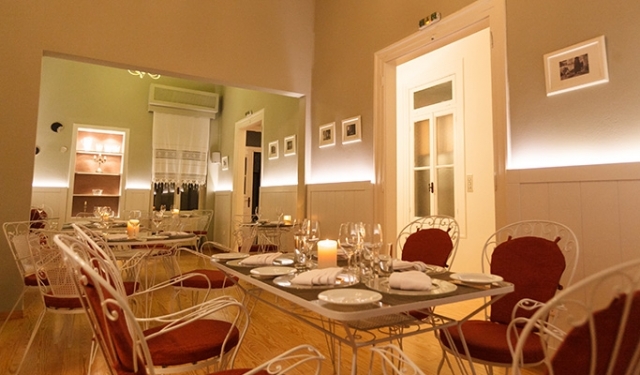Anastasia Balezdrova
Black-eyed bean salad, colours of zucchini or tahini soup, poached sea bass with onions and lamb bandit-style (kleftiko) are some of the dishes that visitors to Athens can try in the restaurant of the newly established museum of Greek gastronomy.
"The idea to create the museum was actually a combination of four good ideas of four young people. Two of us are engaged in the organization of exhibitions and museums, I work in the field of financial management and the last one of us in the field of cultural heritage protection.

We presented our business plan at competitions that we won and so we were able to fund the first stage of the establishment of the museum," Konstantinos Matsourdelis who heads the commercial department told GRReporter.
The young men undertook to materialize their idea in early 2013. A year later, the museum is a reality, and it has even organized its first major event dedicated to monastic cuisine. It however opened its doors to the public three weeks ago.
The idea is highly original and unique in view of the fact that it has no international analogue. "We decided to put Greek gastronomy to the fore because it had been quite neglected until recently and we began to pay attention to it only a few years ago. However, in order for it to have a present and future we have to begin to explore its past. The truth is that we do not "reinvent the wheel", as there have been many studies on alimentation from ancient times to this day. We created the museum precisely with the purpose of presenting their results and related exhibits, thus offering visitors a complete experience."
But that is not all. Visitors can try the specific dishes both in the designated areas and in the museum restaurant, which offer authentic recipes, processed and supplemented by the chef.
Those who want to learn how to prepare the dishes may participate in the seminars organized by the museum and the experience is complete when, all together, they go to the central "Varvakios" market to supply themselves with the necessary products as well as with spices from the nearby shops on "Evripidou" street.
The museum is located in the picturesque Psiri neighbourhood in the centre of Athens and is housed in a beautiful building, built in neoclassical style in 1890. "It was built as a house of an admiral and the way in which the premises are built allows you to make a real journey."


The first exhibition in the museum is dedicated to monastic cuisine. Visitors can see exhibits related to how the monks on Mount Athos and in the rest of the Greek monasteries produce their products such as pulses, honey, olive oil, dairy products and how they prepare them. "Monks eat only to satisfy their biological needs for food, which is why they do not stay at the table for more than 10 minutes. When the abbot of the monastery finishes his meal the rest automatically stop eating as well. The cook prepares the food as a gift to the monks and the whole process is accompanied by prayers," said Konstantinos.
The exhibition will continue until January 2015 and it will be followed by another one that will present the local cuisine of a region in Greece. They will run between 4 and 6 months.

Each exhibition will add something to the menu of the restaurant thus enabling visitors to always try something new and different. Although the museum has opened very recently it has attracted the interest of many tourists. "We work very well, especially in the evenings. The restaurant clients receive a leaflet that informs them about the food on their plate and this is very interesting for them because their journey does not stop with the end of dinner. It starts with becoming aware of the dish they are eating, since the time it was prepared, the qualities of the particular dish and, of course, with the good taste and mood."

The museum is a private non-profit organization and is supported by its own revenues. It offers for sale products produced in the region to which the respective exhibition is dedicated. For the duration of the exhibition called "The monastic diet, traditional practices - eternal values" visitors can buy honey, mountain tea, herbs, wine and pasta produced in the traditional manner by the monks in various monasteries of northern Greece, in Crete and the Peloponnese.

The museum of Greek gastronomy relies on the cooperation of the Research Centre at Athens Academy and the many volunteers who travel around Greece to find the most authentic recipes and continue the tasty journey into the Greek gastronomic tradition.